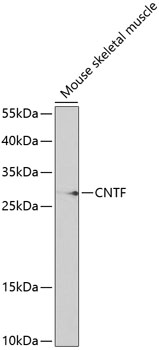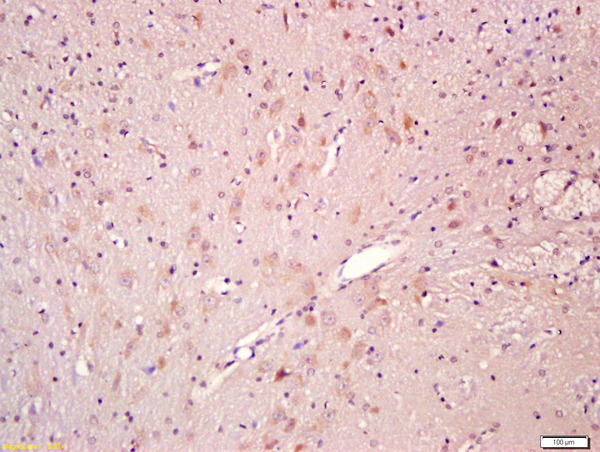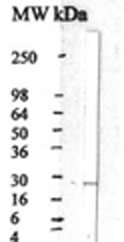CNTF antibody [AS23]
GTX17284
ApplicationsImmunoPrecipitation, Western Blot, ELISA
Product group Antibodies
TargetCNTF
Overview
- SupplierGeneTex
- Product NameCNTF antibody [AS23]
- Delivery Days Customer9
- Application Supplier NoteELISA: This antibody has been used as a coating antibody at 10 ug/ml in a two site ELISA with PS2-B. Typically the ELISA has a working range of 0-20000 pg/ml and a sensitivity of 10 pg/ml when used with biotin conjugated CNTF antibody. Recommended sample volumes are 25-200 microl. Recovery of hCNTF in human plasma is typically > 85 in the ELISA. IP: This antibody has been used to immunoprecipitate >90% hCNTF in solution using a double-antibody method. WB: Use at a concentration of 1 - 5 microg/ml. Predicted molecular weight: 24 kDa. Optimal dilutions/concentrations should be determined by the end user.
- ApplicationsImmunoPrecipitation, Western Blot, ELISA
- CertificationResearch Use Only
- ClonalityMonoclonal
- Clone IDAS23
- Concentration1 mg/ml
- ConjugateUnconjugated
- Gene ID1270
- Target nameCNTF
- Target descriptionciliary neurotrophic factor
- Target synonymsHCNTF, ciliary neurotrophic factor, Ciliary Neuronotrophic Factor
- HostMouse
- IsotypeIgG1
- Protein IDP26441
- Protein NameCiliary neurotrophic factor
- Scientific DescriptionThe protein encoded by this gene is a polypeptide hormone whose actions appear to be restricted to the nervous system where it promotes neurotransmitter synthesis and neurite outgrowth in certain neuronal populations. The protein is a potent survival factor for neurons and oligodendrocytes and may be relevant in reducing tissue destruction during inflammatory attacks. A mutation in this gene, which results in aberrant splicing, leads to ciliary neurotrophic factor deficiency, but this phenotype is not causally related to neurologic disease. A read-through transcript variant composed of the upstream ZFP91 gene and CNTF sequence has been identified, but it is thought to be non-coding. Read-through transcription of ZFP91 and CNTF has also been observed in mouse. [provided by RefSeq, Oct 2010]
- Storage Instruction-20°C or -80°C,2°C to 8°C
- UNSPSC12352203






